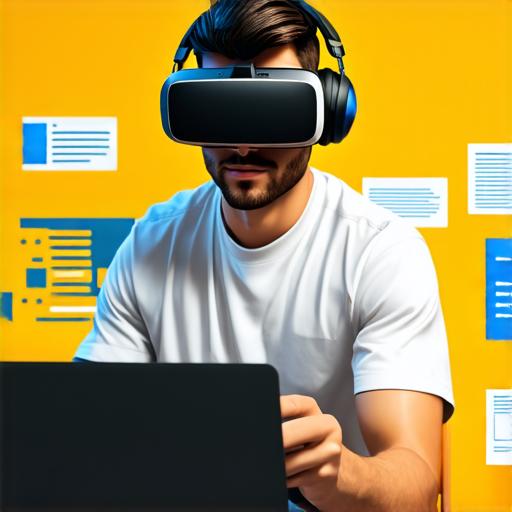
Complete VR Developer Job Description: What You Need to Know
In the rapidly evolving digital landscape, Virtual Reality (VR) development stands as a beacon of innovation. This article offers an insightful exploration into the world of VR development, shedding light on the skills, tools, and opportunities that await those who dare to step into this immersive realm.
The Anatomy of a VR Developer
A VR developer is a creative technologist, blending artistic vision with technical prowess. They are architects of virtual worlds, crafting experiences that blur the line between reality and fantasy.
Technical Proficiency: Mastery of programming languages such as C++, C, or Java is essential. Familiarity with game engines like Unity or Unreal Engine is also crucial.
Creative Vision: A VR developer must possess a keen eye for design and an understanding of user experience (UX) principles to create captivating virtual environments.
The Tools of the Trade
VR development requires specialized tools. Apart from game engines, developers use software like Blender for 3D modeling and Maya for animation. Motion capture suits and VR headsets are indispensable for creating immersive experiences.

Bringing Ideas to Life: Case Studies
Consider the development of the popular VR game, Beat Saber. The team behind it combined technical expertise with creative vision, resulting in a rhythm game that has captivated millions worldwide. Similarly, the VR experience “The Lab” by Valve Corporation showcases the potential for storytelling and interaction within virtual environments.
The Future of VR Development: Opportunities Await
VR development offers exciting opportunities across various industries, from gaming and entertainment to healthcare and education. The demand for skilled VR developers is on the rise, making it an attractive career path for tech enthusiasts.
FAQs
1. What skills do I need to become a VR developer?
Technical proficiency, creativity, UX design skills, and familiarity with game engines are essential.
2. What tools are used in VR development?
Game engines like Unity or Unreal Engine, 3D modeling software like Blender, animation software like Maya, and VR headsets are commonly used.
3. Where can I find job opportunities in VR development?
Opportunities exist across various industries, including gaming, entertainment, healthcare, and education. Job boards such as LinkedIn, Glassdoor, and Indeed often list relevant positions.
A Leap into the Future
As we stand on the precipice of a new era, the role of the VR developer becomes increasingly significant. With the power to shape virtual worlds and redefine human interaction, this is a journey worth embarking upon. So, are you ready to take the leap? The future of immersive technology awaits.

